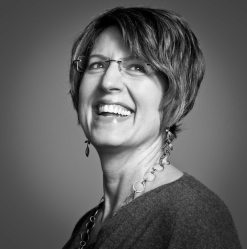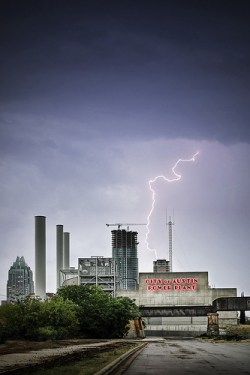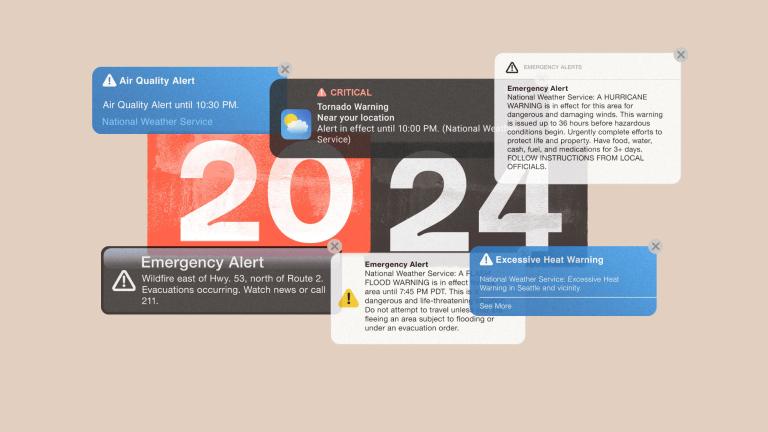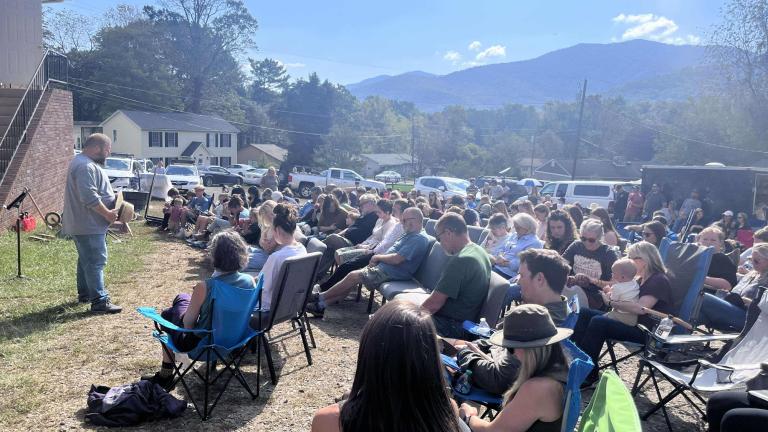A few months ago, an Austin writer took to the pages of the New York Times to fret about the fate of his city. Austin, it seems, is getting too big for its famously weird britches. Not too long ago, an older gentleman fond of wearing high heels and a thong in public ran for mayor three times, Richard Parker wrote. Now, Austin has a Grand Prix racing track, restaurants teeming with celebrities, and yuppies crowding out families.
“[I]n the wake of the Armstrong debacle, it’s hard not to think that pride does, indeed, go before the fall,” Parker wrote, referring to longtime resident Lance Armstrong, who was stripped of his Tour de France titles last year amid growing allegations that he cheated. “Hopefully, Austin can handle success without letting it go to its head; after all, that is precisely what destroyed the hometown hero.”
Parker painted a lovely, nostalgic portrait that simultaneously made me want to preserve Willie Nelson’s old stomping grounds and move there myself, furthering the problem. And indeed, to use Parker’s analogy, Austin is growing like it’s on steroids. The city’s population increased a whopping 51.1 percent from 2000 to 2010.

Jeff WilsonLucia Athens.
Is it possible for a city to grow quickly and retain its character? Can they keep Austin Austin? Lucia Athens, the city’s sustainability director, hopes so.
A Texas native, Athens grew up going to Sierra Club protests and outings with her father, who was chair of the San Antonio chapter. She learned the necessity of community organizing and why it’s important to get out in nature. “If you’re never out engaging with it, you never understand what you’re in danger of losing,” she says.
While she was well-trained in the old green tactics of protesting and planting trees in front of bulldozers, she saw a chance to effect change in a new way. “The green building movement became an opportunity to leverage something that was going to happen already in a better direction,” she says. She helped craft Austin’s first green building program in the early ’90s before spending 10 years turning Seattle into a LEED case study. In 2010, she returned to Austin.
I talked to Athens several times over the phone for Knope and change, our series on the women working hard to green our cities. Here’s an edited version of our conversations:
Q. With SXSW’s ongoing success and Austin’s perennial national reputation as a contender for coolest city, is Austin a victim of its own success? Is it possible to stay weird while getting big?
A. I think that’s the big conundrum. We’re experiencing very significant growth and we will be into the foreseeable future. That’s partly because we do have a very high quality of life here and a pretty good hip factor. We have a lot of young people who want to move here. We have a lot of jobs. With all that, it’s good for the economy, but we have to manage that increase in growth and population. That’s where we are going to be butting up against issues related to mobility, transportation, air quality, water. We’re trying to do a good job of balancing economic development and [population] growth with environmental protection and measures for quality of life. But there’s a long way to go. We just adopted a comprehensive plan that uses sustainability as its core principle, [and] it’s a pretty significant guiding document, [but] there are cranes all over town. We’re really trying to focus on steering that new development in the right direction and figuring out how we’re going to maintain the quality of life we have now with such a big increase in our population.
Q. How have you been able to steer development and population growth?
A. Because of my green building background, I definitely have a couple of key projects that focus on urban redevelopment. One is this big neighborhood on the edge of downtown [where] we’re applying the ecodistrict concept. The Seaholm Redevelopment District is a large multi-tract area that’s just west of downtown and overlooking Lady Bird Lake. The heart of it is a historic decommissioned power plant building called the Seaholm Power Plant. It used to provide steam power. It’s been used on a temporary basis during SXSW. Kanye West played there. [There’s] incredible volume inside. That’s going to be completely redeveloped into a multi-tenant facility that’s going to have an office, restaurant, and a sustainability information center. There’s a really interesting rainwater collection system that’s being integrated that uses old existing vaults underneath the building, turning them into cistern storage.
We’ve talked about bringing this kind of eco-connoisseur concept into [the sustainability information center] where we would have a community hub with a cafe and an information center where people could come to learn about sustainability. I keep calling it the Green Genius Bar, like the Apple Genius Bar. You go there because you need something or you think you do but you’re not really sure what it is. You need someone who really understands all your different options to guide you through to your choice because it’s overwhelming and you don’t have the time to learn about all of those things. It’s going to be a social hub for the sustainability community and people living in the neighborhood.
There’s another parcel just to the east of it that’s going to include our new downtown library. It’s being designed by Lake|Flato. It’s intended to be the best daylight library in the world [PDF]. It’s got amazing screened-in porches where people will be able to go out and read. It’s going to have a huge bike barn facility, a restaurant cafe, and a lot of public meeting space.
There’s going to be a lot of PV and solar. With the eco-district, we’re looking at, How do we bring this overlay in to create a connective tissue between all of these project elements, and create a community identity?
Q. Have you experienced significant NIMBYism with the project?
A. No. I think everybody in the community is very excited about it. These parcels have been latent and underutilized and sitting there for a really long time. There’s a big appetite in the community for this project to happen.
In addition to initial design, there’s a big focus on the ongoing life of the community and how we can work with residents and tenants and educate them and create behavior change. It’s natural with design and the building industry — we tend to focus a lot on the design and construction of buildings, but we haven’t focused as much on what happens when people are living and working in these buildings. You can design a very green building but if you have people living and working in the building that don’t understand that and don’t match their lifestyles and behavior, you’re not really going to be able to achieve your potential.
Q. What other redevelopment projects are you working on?
A. We’re doing something called a Green Alley Demonstration Project. We’ve identified one alley in a neighborhood of the city that’s experiencing a lot of gentrification. … On this block, we’re trying to increase the density in a micro-density approach by adding all of these additional living units along the alley, then completely redoing the alley right-of-way with natural drainage, maybe food production, solar energy; a whole bunch of different things to take the alley and turn it into a community asset.
One of the first projects that we built in this neighborhood, the grandmother is living in the little alley flat in the back. She gets to live close to her grandkids. So it addresses a lot of social sustainability issues. That’s been my other focus area — making sure we’re really casting the net broadly in terms of how we define sustainability to include social and community issues. Even though everybody talks about the triple bottom line, there’s still a tendency to focus on the environmental area. We’re really going to have to tread carefully on this project to make sure we’re not creating more gentrification.
Q. How does working in such a creative community affect your work?
A. We have a lot of challenges accommodating our vast creative population in our city. How do our codes keep up with all that stuff so that we don’t squash it? Fostering a creative community is one of the core parts of our comprehensive plans. …
One of the things I love about Austin is our food truck culture. We’re really known for that. And I think that’s a part of the Keep Austin Weird focus. … It’s a very lively scene. Because we have good weather for a lot of the year, there are sites with multiple trailers and picnic tables. We’ve got apps that tell you where to go. We have a Gypsy Picnic food festival. Some of the small food trailers have been able to grow into a micro-enterprise and eventually open a restaurant. Another cool thing about it: When a city’s in a progression of redevelopment, you’ll end up with underutilized properties. Since it isn’t permanent, since it’s a trailer, there’s a lot of flexibility. You can enliven those sites until something else comes along. It gives us that ability to evolve and grow and change.
Q. Your state recently cut off funding to Planned Parenthood. Part of your governor’s drought strategy included praying for rain. How does being in such a conservative state influence your work?
A. It doesn’t affect us all that much. There’s so much local jurisdictions have control over. We do have to be careful about not getting too aggressive and pushing the boundaries too far because it can create repercussions at the state level. Sometimes we need to tread carefully if we’re trying to advance something innovative because if we go too far, sometimes the next legislative session, there will be new legislation to tamp down what we’re doing. …
We just passed a single-use bag ban. Two other cities in Texas have [done] that and quite a few other cities are considering it. Right now, I don’t know if we’re going to see any repercussions [at the state level], but if there are, we will probably try to coordinate with people in the other cities.
Q. How will climate change affect Austin?
A. Increasing the severity and length of droughts and high temperatures. We had incredible record temperatures the summer before last. That was the same summer we had wildfires at a level we had never experienced before in Central Texas right on the edge of the city limits. We lost a massive forest to the east of the city. Even though we’re not on the coast and experiencing rising sea levels, there’s an increasing recognition that we need to be thinking about adaptation and whether or not our infrastructure is resilient, including roads, bridges. We experience periodic flash flooding. … The other place it plays out: As an example, when Katrina happened, we had a lot of refugee population come into Austin. We had to accommodate and house, provide social services. So we also experience climate impacts that happen in other places.
Q. Are you worried about water shortages?
A. Water is going to be one of our biggest issues. We did just get a lot of rain this past week but we’ve had a very dry winter. Two of our big cultural barriers: One, everybody expects to be able to get into a single-occupancy vehicle and go wherever they want and find accessible cheap parking. And two, the expectation that we will have ample water available to irrigate ornamental landscapes, including turf. Really, if we’re looking at a well-adapted plant palette, we’re going to have to ask ourselves whether we can have ornamental lawns anymore. That’s a big cultural hot-button issue here. People don’t want to talk about giving up their lawns.
Q. What does Keep Austin Weird mean to you? I know it means different things to different people — anti-corporatism …
A. One of the fundamental components of Austin’s identity is freedom of expression. We really believe in people’s right to express themselves. Everybody’s OK, whoever they are, whatever they look like, however they are dressed. There is a very high level of tolerance in Austin. I love going to the night club the White Horse. You’ll see someone in their Wranglers and their cowboy hat. You’ll see someone looking grunge in flannel. And then you have steampunk people. It’s just a huge cross-section and people are pretty comfortable with that.




